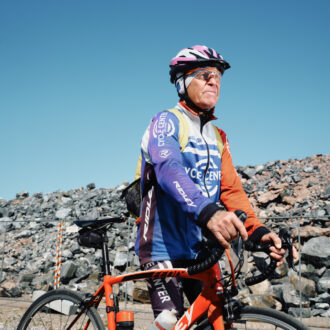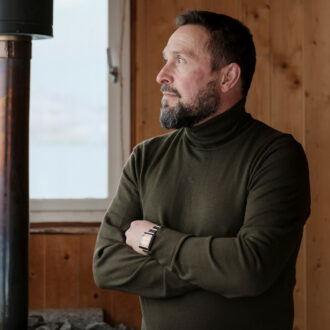As Finns prepare for the holiday season, we visit the US to see how Finnish customs and Christmas traditions are enduring in small-town Minnesota.
In northern Minnesota, Finnish roots run deep. Finns began emigrating here in the late 19th and early 20th centuries, when the lumber and mining industries were booming. A second wave of immigrants came to mining areas like the town of Virginia, Minnesota after the Second World War.
“Times were hard in Finland, and travel became available again,” says Eila Ivonen, who came to Minnesota in 1953 to meet her grandfather, who had arrived in 1913. She was planning to return to the University of Helsinki, where she had been admitted, but fell in love with an American and decided to stay. “That’s kind of the typical immigrant story,” Ivonen says. “Most of them intended to go back, but something happened.”
Centres of Finnish activity
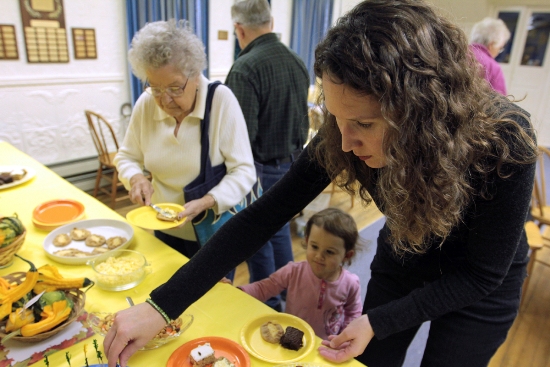
Heather Surla (right) and her friends help themselves to Karelian pies and other delicacies at Kaleva Hall.Photo: Robert Downs
Finnish immigrants looked to assimilate while still preserving their heritage, and those that celebrated Finnish culture near Virginia did it through a place called Kaleva Hall.
The hall has been the centre of Finnish activity in Virginia for more than 100 years. Constructed in 1906 by the Finnish Temperance Society, the hall has acted as a boarding house, a dance hall, a gathering place for the Finnish socialist party and the site of Sunday services for the Unitarian Church (which was also founded by Finns).
The hall was especially important to those who spoke little English. Plays and dances routinely filled its stage, and throughout the 20th century it remained a place to socialise, read or spend a Saturday night.
“My mother wants on her gravestone with my father: ‘They danced a thousand miles,’” says Belinda Brunfelt, a third-generation Finn. “When I was a child, there were Finnish dances here every weekend.”
Now, second- and third-generation Finns are carrying on the practices that their elders taught them. While it gets harder with every generation to pass traditions on, many Finnish descendants are making sure their customs continue. Kaleva Hall forms a home for the local chapter of the Knights and Ladies of Kaleva, a Finnish American service and social organisation.
Holiday traditions
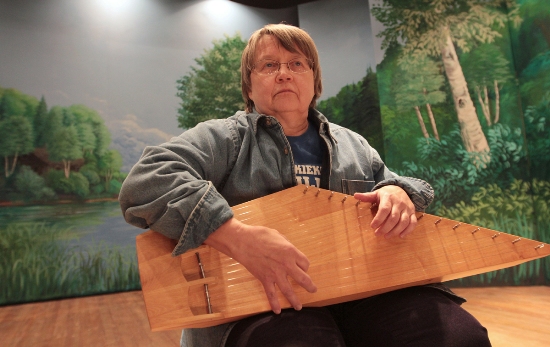
Third-generation Finnish American Belinda Brunfelt, shown here playing the kantele, says, “When I was a child, there were Finnish dances here every weekend.”Photo: Robert Downs
Up north, the Christmas season officially begins with a ceremony at Kaleva Hall, where a man dressed as the mayor of Turku reads the proclamation of Christmas Peace – in both Finnish and English. This mirrors the official declaration ceremony, which happens in Turku on Christmas Eve Day.
On Christmas Eve, graveyards are illuminated by the glow of candles wrapped in bowls of carved ice. Revellers freeze buckets of water until almost completely solid, then dump the remaining liquid from the middle. Candles are placed inside the hollow ice bowl and the flickering orbs illuminate the cemeteries.
Some try to read their own fortune on New Year’s Eve. In a ladle they melt a bit of tin, lower the hot liquid it into water and interpret the metal shapes that emerge from the incompatible mixture as the tin instantly cools and solidifies. The Ladies of Kaleva see their glasses of murky water half full: “Our futures are always bright,” Ivonen says.
The art of being Finnish
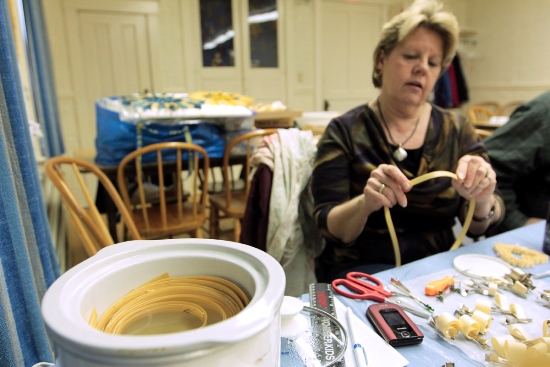
Sharon Panula demonstrates the craft of “lastu,” in which special-ordered pieces of wood from Finland are soaked, cut and shaped into ornaments.Photo: Robert Downs
Sharon Panula is a full-blooded Finnish American, and practices the art of lastu, or wood shaving. She makes mobiles out of special strapping ordered from Finland, soaking the wood in warm water until it is pliable enough to be shaped. Panula sells her beautiful hanging creations at craft sales to benefit the Ladies of Kaleva.
Belinda Brunfelt plays the Finnish national instrument, the kantele, best described as a type of zither or harp. Her collection of kanteles isn’t limited to just her five-, 10- and 15-string models – she also owns a 39-string chromatic concert kantele. She special-orders strings from Finland to keep her instruments sounding good. “The concert kantele is pretty darn hard to play,” she says after plucking a melancholy tune.
Finnish American recipesWe asked Heather Surla and her Finnish American friends in Virginia, Minnesota for a couple of their favourite recipes for Christmastime or other times of year. (For more see thisisFINLAND’s Christmas Cuisine page) Ruth’s Pulla (pastry)Makes 8 loaves of a traditional bready pastry – recipe may be halved or quartered for smaller batches. 4 cups (9.5 dl) milk, scalded Measure sugar, salt and cardamom into large bowl. Add scalded milk. While the mixture cools, mix yeast into a half cup warm water with 1 teaspoon sugar. Melt oleo. Add beaten eggs to milk mixture. Beat with electric mixer. Add yeast and 8 cups flour to milk and egg mixture. Let rest five minutes. Add half of melted oleo. Beat. Add 8 cups of flour by hand. Add remaining melted oleo. Knead 5–8 minutes. Cover and let rise for 90 minutes in warm place. Punch down. Let rise 30 minutes. Grease eight nine-by-four-inch loaf pans. Divide dough into 8 equal pieces. Roll and braid into 8 loaves. Put in pans, let rise until dough reaches top of pans. Bake at 350 degrees Fahrenheit (175 degrees Celsius) for 25–30 minutes. While cooling on rack, brush with mixture of hot coffee and sugar. Sprinkle with sugar. May be frozen. Great toasted. Karjalanpaisti (Karelian Three-Meat Stew)1 pound (450 g) beef, cut into 1-inch (2.5-cm) cubes In large, heavy casserole with a lid, layer meats with the onion, salt and allspice. Top with the bay leaves. Cover tightly and bake at 375 degrees Fahrenheit (190 degrees Celsius) for five hours. The meat will be very tender and will stew in its own juices. It is not necessary to add other broth or juice to the meat unless the dish is not well covered. Remove bay leaves before serving. This broth is traditionally not thickened. Serve over boiled new potatoes. |
By Robert Downs, November 2011

